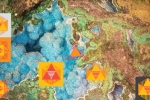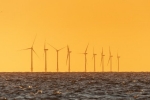Download the Aussie Mine 2019 report

A deep dive analysis of Australia’s mining sector, specifically those organisations with a market cap <$5B
Aussie Mine, our annual report that looks at the performance of Australian mining companies listed on the ASX (with a market cap <$5B), has shown this year that a quiet boom is underway, but it’s results are a mixed bag for those within the group.
Not since 2011 have we seen a higher market cap. Mining is cyclical and it appears we’re well and truly of the last slump. The boom has been driven by favourable commodity prices and solid investment decisions over the last few years, as companies repaid debt and increased returns to shareholders.
Now in it’s 14th year, the analysis shows market cap has grown to $64B - an increase of 9%. That said, individual performance has been mixed, with market cap decreasing for 24 of the 50 in the list, particularly those focused on coal and lithium - this demonstrated with the returning of Yancoal and Whitehaven who had previously graduated from the list.
Lithium, which in recent years has seen strong results, has had to grapple with decreasing prices brought about by a number of new producers coming on globally without a respective growth in demand. However, based on the ongoing strategic importance of the battery mineral to meet demand for advanced technologies, it will inevitably level out in the near future.
Yancoal
Head office: Sydney
Market capital ($M): 4119.77
Commodity: Coal
No. employees: 2,592 employees across 1 country
ESG approach & activities: Comprehensive Environment Management system implement 2018; a governance structure for their ESG across operations and communities
Iluka
Head office: Perth
Market capital ($M): 4543.04
Commodity: Mineral Sands
No. employees: 3,259 employees across 3 countries
ESG approach & activities: Recognised as a leading sustainability performer on the Dow Jones Sustainability Index
MMG
Head office: Melbourne
Market capital ($M): 4015.00
Commodity: Diversified
No. employees: 13,230 employees across 3 countries
ESG approach & activities: Have a Governance & Nomination Committee and contributes to all 17 of the UN Sustainable Development Goals
Tap to explore.




Environmental Social Governance (ESG)
Trust and transparency have never been more important to mining. The global - and local - spotlight is well and truly focused on climate change, with the industry often being cast as the ’villain’, and ongoing negative press dominating media channels. With limited transparency and voluntary reporting around ESG governance, there’s a huge opportunity for the group to take a more unified stance and demonstrate the importance and essential role commodities play in everyday life and the economy. Coal in particular would benefit tremendously from articulating to the general public the role it plays as we transition to a low carbon renewables future, and the practical realities of a sustainable power mix for the economy.
Overall, an increased focus in ESG reporting, in a consistent manner, will go a long way to helping build trust and understanding.
Commodities
This map displays MT50 mines in production in Australia.

Unmined opportunities in India and Southeast Asia
Australian miners should be looking to countries such as India and other emerging Southeast Asia nations like Vietnam, Indonesia, Philippines, Malaysia and Thailand as a key destination for their commodities, as these nations collectively have the largest concentration of middle-income population in the world.
India and the emerging Southeast Asian nations are often overlooked but they present enormous opportunities for miners in the years to come. Diversifying offtake partners is one way to mitigate reliance on one jurisdiction. Middle-income countries like India and those in Southeast Asia typically become more ‘metals intensive’ as they develop making them prime new export markets for our MT50 commodities.

Technology and automation
The unmined potential for automation of equipment and decisions is the next frontier in productivity improvements in the mining industry. While for most mid-tier players, dreams of the fully digitally-enabled autonomous mine remain some years away, relatively simpler decision automation initiatives are within reach. MT50 companies are generally behind the automation curve – behind both large scale miners and new entrants (who define development plans using automation as a foundational element). The group is often driven by concerns about the cost of automation (including infrastructure investments) or skepticism around the benefits of automation. Many MT50 companies we interviewed appear to focus on equipment automation (i.e., autonomous trucks) rather than broader, more holistic automation of their overall business.
A key component of realising the value of decision optimisation is improving the “digital IQ” of MT50 companies. This is achieved by making people comfortable with working through more automated processes that use data to optimise across the value chain. The benefit of this approach is less reliance on gut feel decision making that optimises locally at the potential expense of other elements within the site.
Our analysis of this integral mining group show strong operating fundamentals across the board for mid-tier miners have created a window of opportunity to adapt to the growing and changing expectations of their stakeholders. Technology allows mines to operate safely and more efficiently. With ESG impact reporting and maintaining a disciplined strategy to create ongoing value for its stakeholders, the industry can forge a better future for all beneficiaries of the mining industry, consumers and communities alike.
Contact us

















